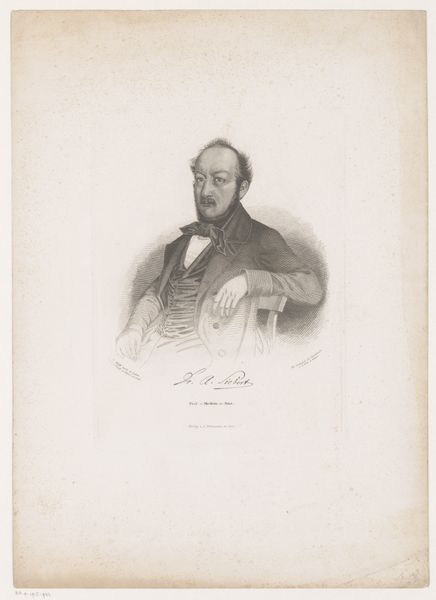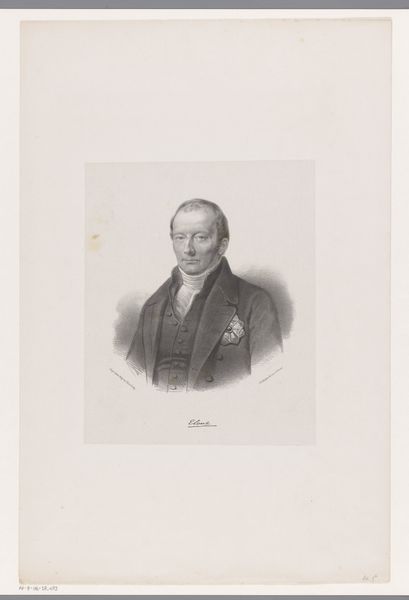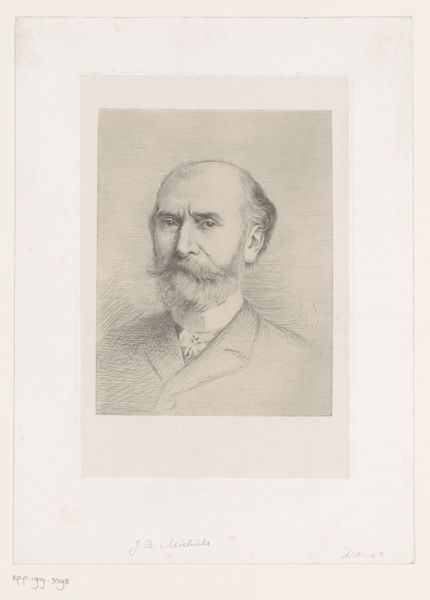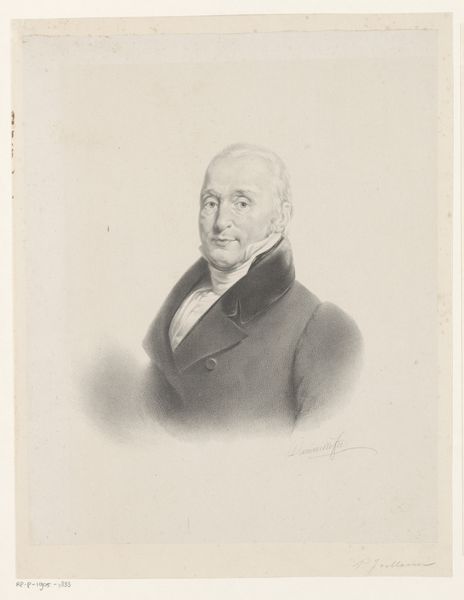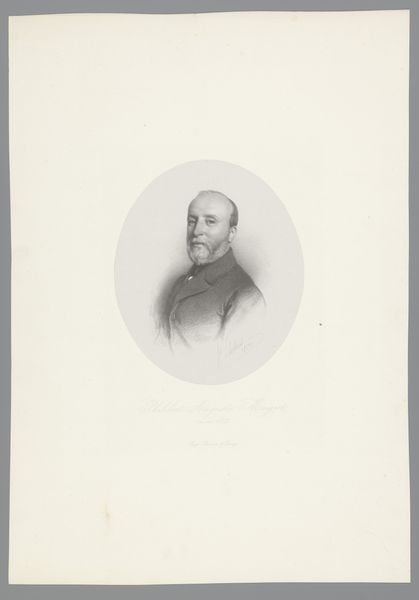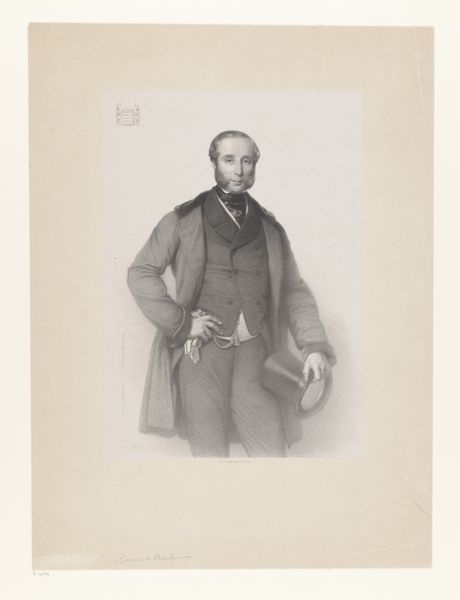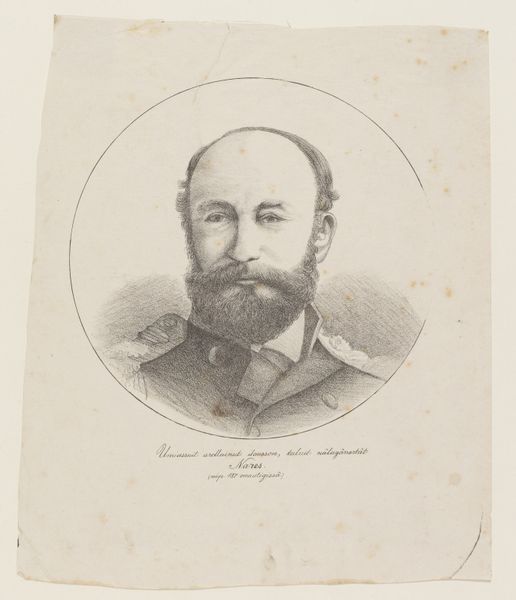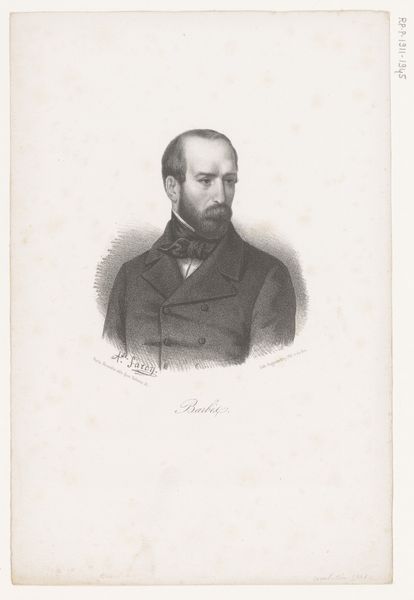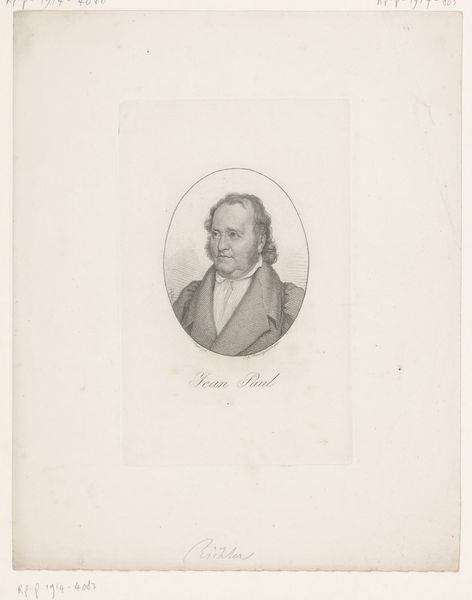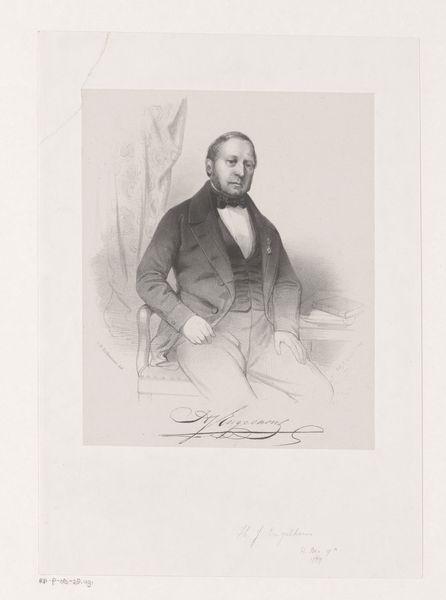
drawing, pencil, engraving
#
drawing
#
old engraving style
#
pencil drawing
#
pencil
#
portrait drawing
#
engraving
#
realism
Dimensions: height 194 mm, width 142 mm
Copyright: Rijks Museum: Open Domain
Editor: This is "Portret van een onbekende man genaamd Négret", made in 1880 by Auguste Danse. It's a pencil drawing, almost photographic in its detail, but the subject's gaze is quite intense. What can you tell me about this piece? Curator: Considering the date, 1880, and its precise realism, this portrait needs to be viewed in the context of photography's rise. Before photography, portraiture was the domain of the wealthy, solidifying their status. As photography democratized image-making, what role did portrait drawing now play? Editor: So, was Danse competing with photography or using it as a tool? Curator: Perhaps both. Artists like Danse had to adapt. Pencil drawings such as this might have served as more intimate, hand-crafted alternatives to mass-produced photographic portraits. Think of it – a return to craft, imbuing the subject with a certain… gravitas perhaps lost in the instantaneity of photography. Does the anonymity of the subject interest you? Editor: It does, actually. Knowing it’s "an unknown man named Négret" makes it even more intriguing. It feels like a study, or perhaps a commissioned portrait where the sitter wished to remain relatively anonymous in a larger social sense. Curator: Exactly! The absence of identifying markers allows the portrait to function as a kind of social commentary. It directs our attention not just to an individual, but perhaps to the representation of a type—a bourgeois citizen of the late 19th century. The question then becomes: what norms or expectations did this imagery convey, reinforce, or perhaps even subtly subvert? Editor: That's fascinating. I hadn’t thought about it as potentially subversive. I see it now as both an individual portrait and a social document. Curator: Indeed. It really pushes us to consider art’s engagement with societal structures.
Comments
No comments
Be the first to comment and join the conversation on the ultimate creative platform.

